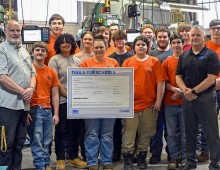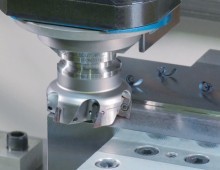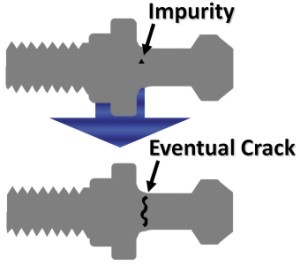Pull Studs: Under Pressure
Why are pull studs under more pressure than ever before?
Whether you think of them as retention knobs, pull studs, or something else entirely, the very fact that you’re thinking of them puts you ahead of the curve. For many, pull studs are a non-thought; regarded as forgettable accessories that don’t get any attention unless something goes wrong. But if something does go wrong, it can be catastrophic –causing damage to the component being machined, or worse, to the machine tool itself.
But what may have seemed like a humble or forgettable part 20 years ago, when machines were lucky to have generated 1,600 lb (726 kg) of grip pressure on the pull stud, has to come back into focus now that those forces are creeping upwards of 2,500 lb (1,134 kg). As the forces exponentially increase, precision and accuracy in machining and tooling increasingly require higher quality of the lone piece connecting the spindle to the toolholder.
This one bolt must stand up to severe conditions, and should be inspected and exchanged regularly to ensure top performance and integrity. Repeated clamping and unclamping during automatic tool changes leads to pull stud bolt fatigue, and can cause breakage. Generally speaking, a pull stud bolt has about a three-year life span, but this can be much shorter depending on tool change frequency and many other operating conditions.
The use of coolant in machining should be another prompt for regular inspection, as it can lead to corrosion. Although water-soluble coolant is generally alkaline, it can become acidic with long-term use. This increases the risk of rust and corrosion inside the coolant tank, on the work table, and other parts of the machine, including the pull stud bolts. This corrosion decreases the component’s integrity and can lead to fracture.
With most machine tools, the gripping mechanism relies on a series of stacked, loose washers, and bevel washers that, when under a load, flatten out. Changing the position of the surface where the gripper holds the knob by just a little bit can cause retention force to vary. And .004 in. (0.102 mm) differences can greatly influence the performance of the tools.
Also of note, ASME standards have been revised. In the new spec, retention knob installation torques have been published to make sure the retention knob is installed properly and isn’t bulging out the small end of the taper. This just goes to show how important it is to install knobs with a torque wrench, as opposed to the far less accurate installation method using a wrench and a hammer.
Although small, these single components are mighty. And with so much pressure on their performance, the key is to buy quality products from a premium supplier. Low quality bolts will experience chatter and lead to vibration. Safe and secure production requires a superior product.
Today, premium suppliers are taking extra measures to deliver top performance and part accuracy. Unique designs are now available for different types of machines, for consistency and reliability during production. Going the extra step, some manufacturers mark every pull stud with a serial number for traceability and internal tracking purposes, allowing users to keep track of the age of individual parts and better monitor lifespan.SMT






¿Te pareció interesante o útil? Haznos saber tu opinión agregando tus comentarios o preguntas a continuación.